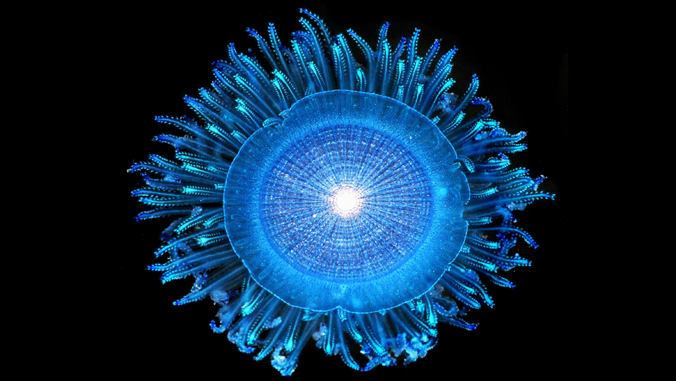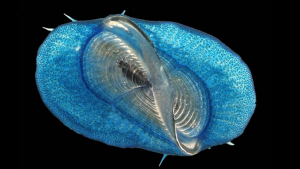
The North Pacific “Garbage Patch” aggregates an abundance of floating sea creatures, as well as the plastic waste it has become infamous for, according to a study published in PLOS Biology and co-authored by oceanographers in the University of Hawaiʻi at Mānoa School of Ocean and Earth Science and Technology (SOEST).
Marine surface-dwelling organisms, such as jellies, snails, barnacles and crustaceans, are a critical ecological link between diverse ecosystems, the study authors wrote, but very little is known about where these organisms are found. Plastic pollution provides a clue: the oceanographic forces that concentrate buoyant man-made waste and pollutants in “garbage patches,” may also aggregate floating life.

There are five main oceanic gyres—vortexes of water where multiple ocean currents meet—of which the North Pacific Subtropical Gyre is the largest. It is also known as the North Pacific “Garbage Patch,” because converging ocean currents have concentrated large amounts of plastic waste there.
The researchers leveraged an 80-day, long-distance swim by Benoît Lecomte through the gyre in 2019, dubbed The Vortex Swim. To investigate these floating lifeforms, the sailing crew accompanying the expedition collected samples of surface sea creatures and plastic waste. The expedition’s route was planned using computer simulations developed by SOEST oceanographers, Nikolai Maximenko and Jan Hafner, which simulate ocean surface currents to predict areas with high concentrations of marine debris.
“Surface currents are the most complex part of ocean dynamics,” said Maximenko, who is a senior researcher in the International Pacific Research Center at SOEST. “The model, which had been successfully used previously to simulate trans-Pacific drift of debris generated by the 2011 tsunami in Japan, now helps us to understand the role that ocean currents play in sustaining the pelagic ecosystem.”
The expedition team collected daily samples of floating life and waste in the eastern part of the North Pacific Subtropical Gyre, and the researchers found that sea creatures were more abundant inside the gyre than on the periphery. The occurrence of plastic waste was positively correlated with the abundance of three groups of floating sea creatures: by-the-wind sailors (Velella sp), blue buttons (Porpita sp) and violet snails (Janthina sp).
The same ocean currents that concentrate plastic waste in oceanic gyres may be vital to the life cycles of floating marine organisms, by bringing them together to feed and mate, the authors say. However, human activities could negatively impact these high sea meeting grounds and the wildlife that depends on them.
“The ‘garbage patch’ is more than just a garbage patch,” said Rebecca Helm, assistant professor at the Earth Commons Institute at Georgetown University and lead author of the study. “It is an ecosystem, not because of the plastic, but in spite of it.”

